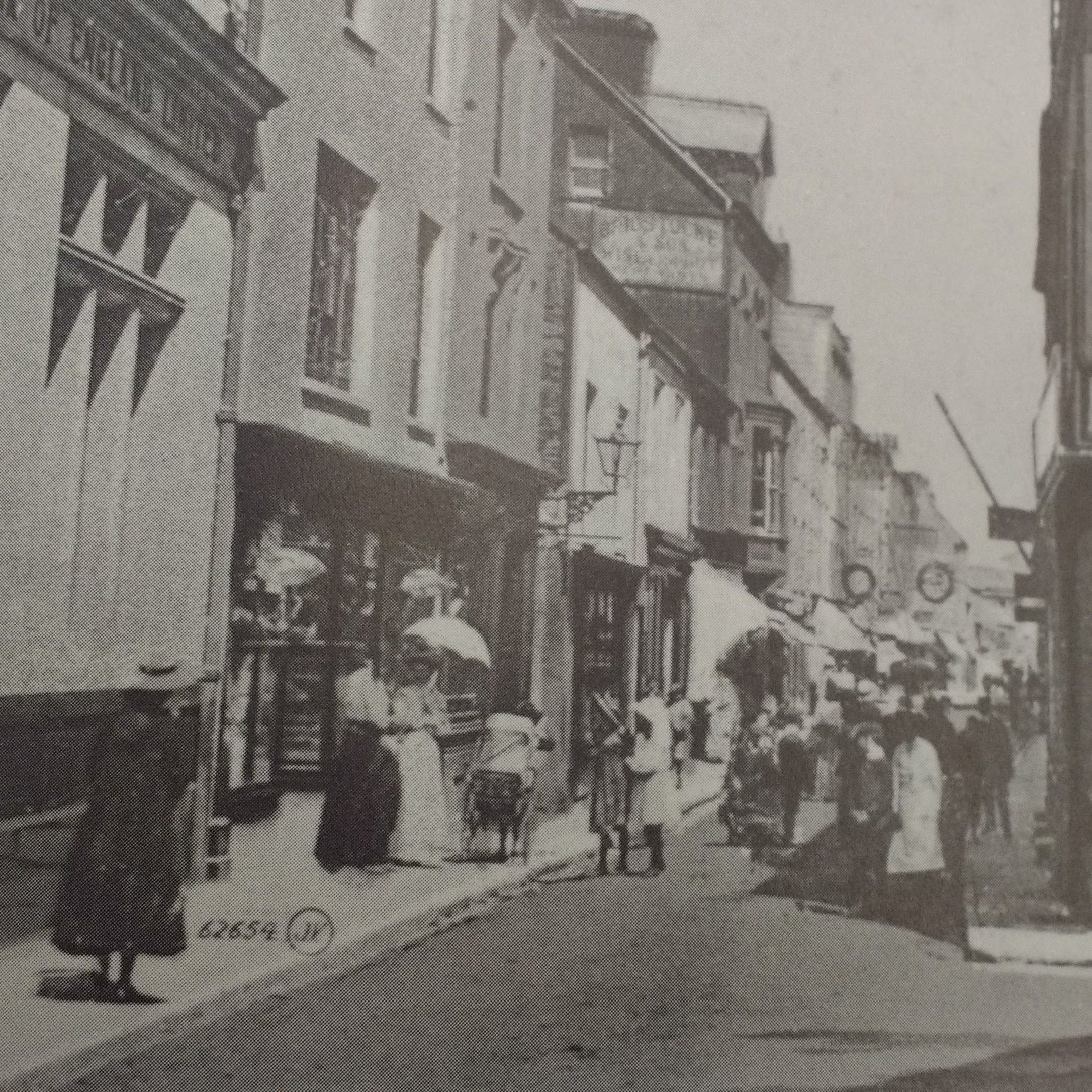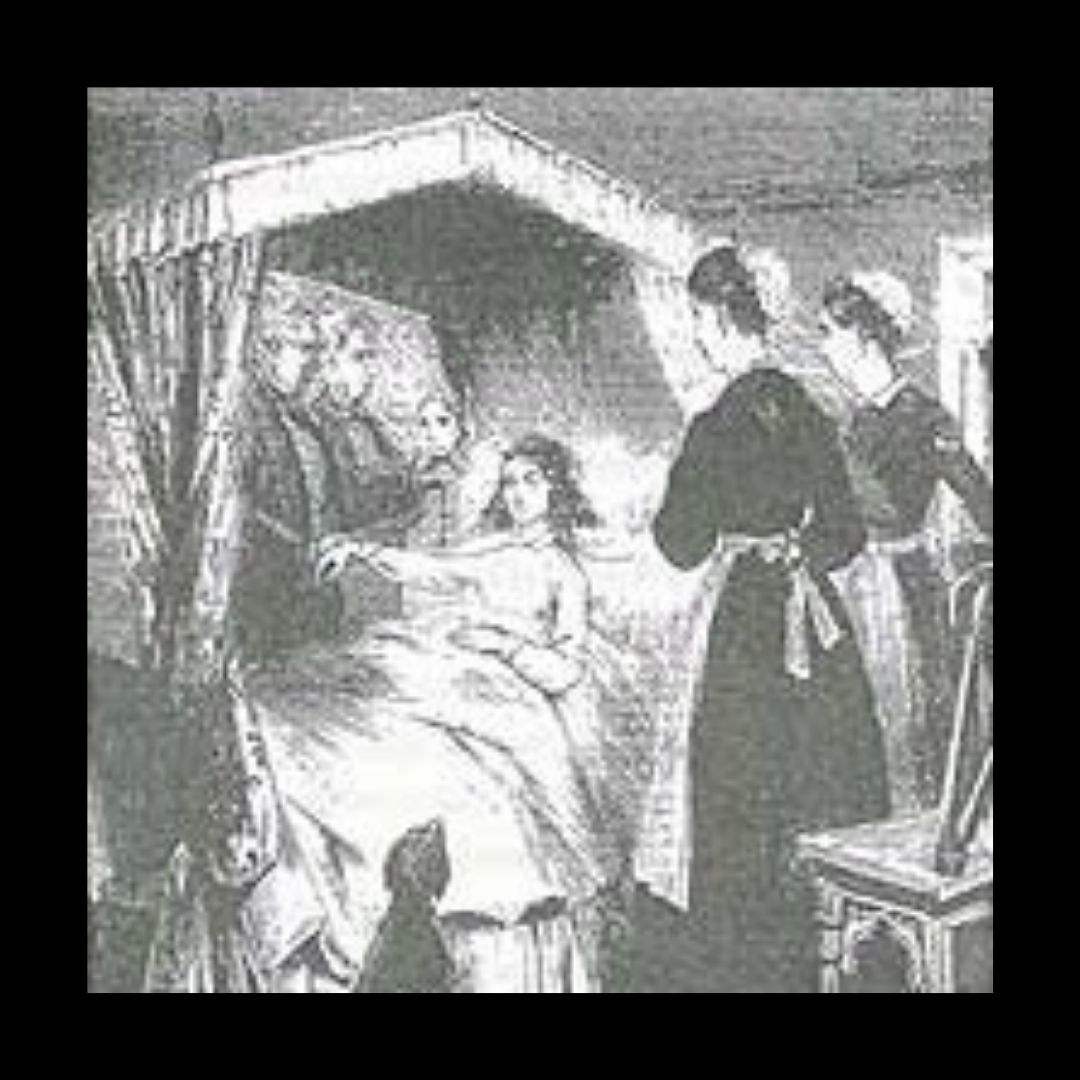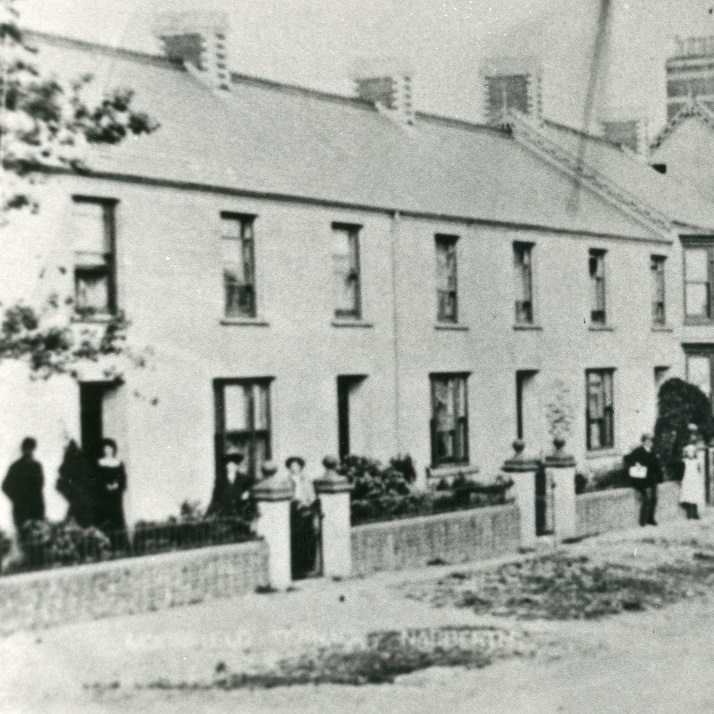Mabel the Fleming
Mabel lived in Haverfordwest, Pembrokeshire during the latter part of the twelfth century at a time when history was written almost exclusively by men and the only women who were recorded in the annals would have been royalty or nobility. Mabel was neither, being the wife of Hugh the Fleming, who is thought to have been a wool trader. They appear to have been the medieval equivalent of middle class and lived in a stone house, unlike some of their neighbours.
The reference we have to her relates to a ruling in a dispute between Richard de Kylameri and Hugh & Mabel dated 1288. What is unusual about this document, written in Latin, is that Hugh’s wife is specifically mentioned, which implies that she was a person of some importance. The reference is as follows:
‘Final concord in a fine levied in the court of Humphrey de Boun, lord of Haverford, at Haverford, before Richard de la Lake and Maurice de Kylameri, bailiffs of the pleas of Haverford, in the presence of Adam Cole and (Phillip) the painter, reeves of Haverford, Stephen de Castro martini, Geoffrey Broun,, and Thomas Sturmine, between Richard de Kylameri, plaintiff, and Hugh le Fleming and Mabel his wife, deforciants,** whe the deforcianats acknowledged half a burgage* in the town of Haverford to be the right of the plaintiff, which half a burgage plaintiff had of the gift of the said Hugh and Mabel at a rent of one iron needle annually. For which the plaintiff gave to deforciants 12 marks’.
Mabel and Hugh would have been decendents of one of the two waves of Flemish migration into the Pembrokeshire. The first took began from the early 1100s when 2,500 men, women and children arrived in the Hundred of Rhos. A second wave of immigration came about after their native Flanders was swallowed up by the North Sea in 1134 and Henry 1 allowed them to settle in the county. Whether Mabel and Hugh were decendents of the first or second wave of immigration we don’t know. However, they must have been well established members of the town of Haverford. It is well known that the medieval principality of Flanders was an economically advanced part of Europe with a reputation as a centre of trade and industry with special emphasis on the production of high quality cloth. Given the fact that Mabel and Hugh were living and trading in Haverford, which also had a reputation for trade and that the rent was for “one iron needle”, it seems very likely that they were involved in the wool trade.
The most significant thing about Mabel the Fleming is that we are aware of her existence and that here life was documented at all. Furthermore, she has made it onto a twenty-first century app giving the history behind The Talking Tapestry of Llangwm which tells the story of the Flemings in Llangwm.
Roedd Mabel yn byw yn Hwlffordd, Sir Benfro yn ystod rhan olaf y ddeuddegfed ganrif ar adeg pan oedd hanes yn cael ei ysgrifennu bron yn gyfan gwbl gan ddynion ac mai’r unig fenywod a gofnodwyd yn y croniclau oedd y teulu brenhinol neu uchelwyr. Nid oedd Mabel y naill na’r llall ond yn wraig i Hugh y Ffleming, y credir iddo fod yn fasnachwr gwlân. Ymddengys iddynt fod yr hyn sy’n gyfystyr â’r dosbarth canol yn y canol oesoedd ac yn byw mewn tŷ carreg, yn wahanol i rai o’u cymdogion.
Mae’r cyfeiriad sydd gennym ati yn ymwneud â dyfarniad mewn anghydfod rhwng Richard de Kylameri a Hugh a Mabel dyddiedig 1288. Yr hyn sy’n anarferol am y ddogfen hon, sydd wedi’i hysgrifennu yn Lladin, yw bod gwraig Hugh yn cael ei chrybwyll yn benodol, sy’n awgrymu ei bod yn berson tra phwysig. Mae’r cyfeiriad fel a ganlyn:
Cytundeb terfynol mewn dirwy a godwyd yn llys Humphrey de Boun, arglwydd Hwlffordd, yn Hwlffordd, yng ngŵydd Richard de la Lake a Maurice de Kylameri, beilïaid pledion Hwlffordd, ym mhresenoldeb Adam Cole a (Phillip) y paentiwr, prif ynadon Hwlffordd, Stephen de Castro martini, Geoffrey Broun, a Thomas Sturmine, rhwng Richard de Kylameri, achwynwr, a Hugh le Fleming a Mabel ei wraig, camoresgynwyr, ** a’r camoresgynwyr yn cydnabod mai hanner tir bwrdais* yn nhref Hwlffordd yw hawl yr achwynwr, yr oedd hanner tir bwrdais yn rhodd i Hugh a Mabel ar rent blynyddol o un nodwydd haearn. Am hyn rhoddodd yr achwynwr 12 marc i’r camoresgynwyr’.
Byddai Mabel a Hugh wedi bod yn ddisgynyddion un o’r ddwy don o fewnfudwyr Ffleminaidd i Sir Benfro. Dechreuodd y don gyntaf o ddechrau’r 1100au pan gyrhaeddodd 2,500 o ddynion, menywod a phlant i Gantref Rhos. Daeth ail don o fewnfudwyr ar ôl i’w Fflandrys brodorol gael ei lyncu gan Fôr y Gogledd yn 1134 a chaniataodd Harri’r 1af iddynt ymsefydlu yn y sir. Ni wyddom a oedd Mabel a Hugh yn ddisgynyddion y don gyntaf neu’r ail don o fewnfudwyr. Fodd bynnag, mae’n rhaid eu bod wedi hen ymsefydlu yn nhref Hwlffordd. Gwyddys bod tywysogaeth ganoloesol Fflandrys yn rhan economaidd datblygedig o Ewrop gydag enw da fel canolfan fasnach a diwydiant gyda phwyslais arbennig ar gynhyrchu brethyn o ansawdd uchel. O ystyried y ffaith bod Mabel a Hugh yn byw ac yn masnachu yn Hwlffordd, oedd hefyd ag enw da am fasnach, a bod y rhent yn “un nodwydd haearn”, mae’n debygol iawn eu bod yn rhan o’r fasnach gwlân.
Yr hyn sy’n fwyaf arwyddocaol am Mabel y Ffleming yw ein bod yn gwybod am ei bodolaeth, a bod ei bywyd wedi’i gofnodi o gwbl. Hefyd mae ei hanes wedi’i gynnwys ar ap yr unfed ganrif ar hugain sy’n rhoi’r hanes sy’n gefndir i’r Tapestri Sain ar Llangwm sy’n adrodd hanes y Fflemingiaid yn Llangwm.
*Burgage is a medieval land term used in Great Britain and Ireland, well established by the 13th century. A burgage was a town rental property, owned by a king or lord. The property usually, and distinctly, consisted of a house on a long and narrow plot of land, with a narrow street frontage.
**Deforciant (plural deforciants), now an obsolete term in British law refers to one who keeps out of possession the rightful owner of an estate.
With thanks to Jane Mills of Llangwm History Society.





